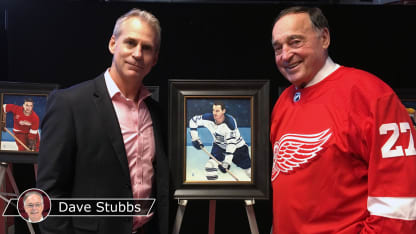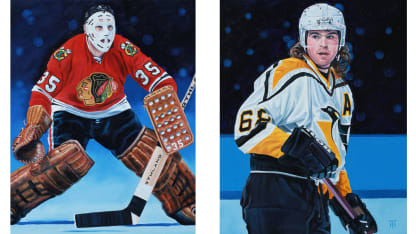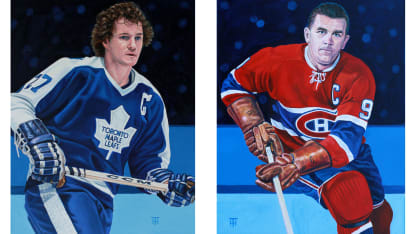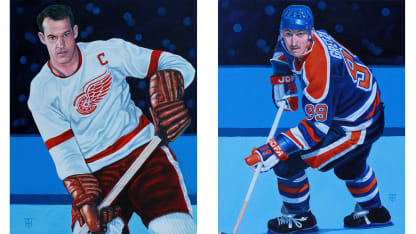"After the first 11, I went through a period of asking, 'How is this going to be most efficient?' " Harris said. "I would paint three at a time, all the faces first, draw three, then paint three faces. Then with another series I'd do all the gloves. Next, I'd do one start to finish, then two at a time.
"What I figured out is that it didn't really matter. I couldn't find a system that would be faster than just sitting down and painting. The only thing I figured out, and it was more luck than anything, was that I had a lot of Canadiens at the end, so having that palette already mixed for doing red, white and blue saved a bit of time. If I had two or three Canadiens in a row, the paint was wet enough that I could keep moving through them."
A few times, he'd discard a drawing and start over, sometimes because he had a new photo from which to work, other times because he was unsatisfied with the drawing.
"Drawing is the most important part," he said. "If I got that right, it took all the stress away and I was ready to do the painting."
Even with his brushes still damp from this remarkable year, Harris says he's hardly had his fill of hockey. He and his wife will take a short vacation, then he'll begin a large canvas of Oilers' Connor McDavid for the NHL Players' Association, an annual commission to celebrate the winner of the Ted Lindsay Award.







